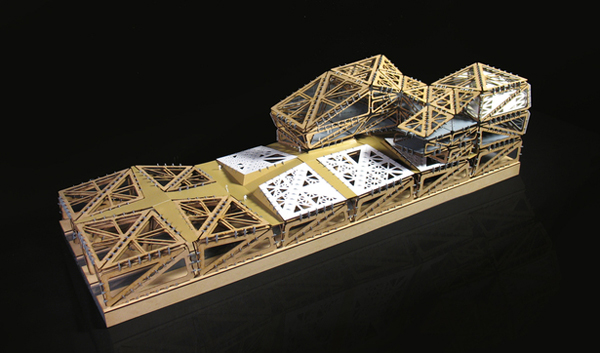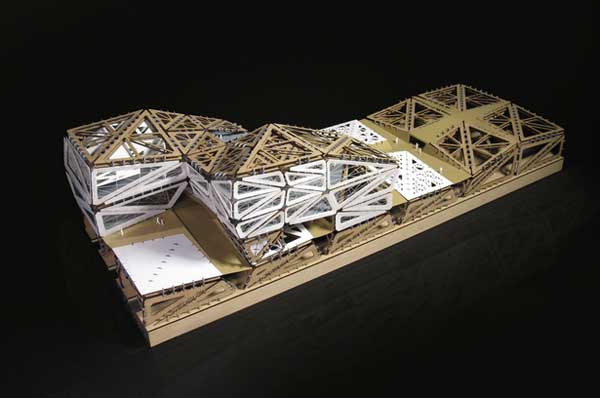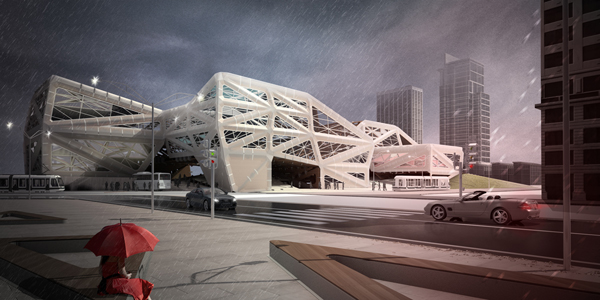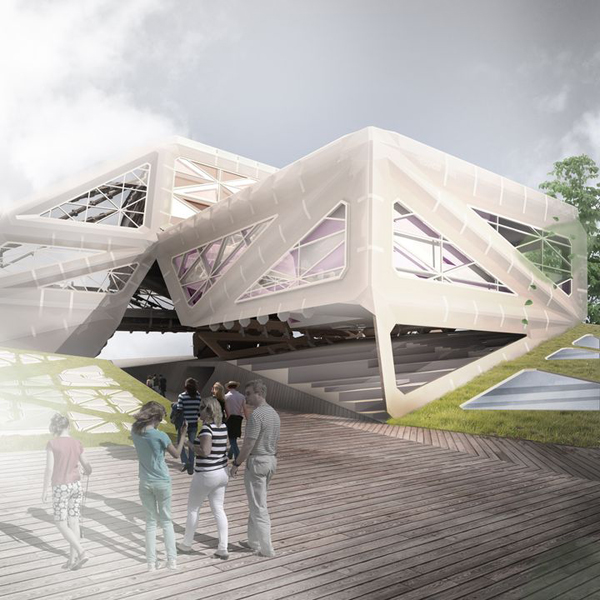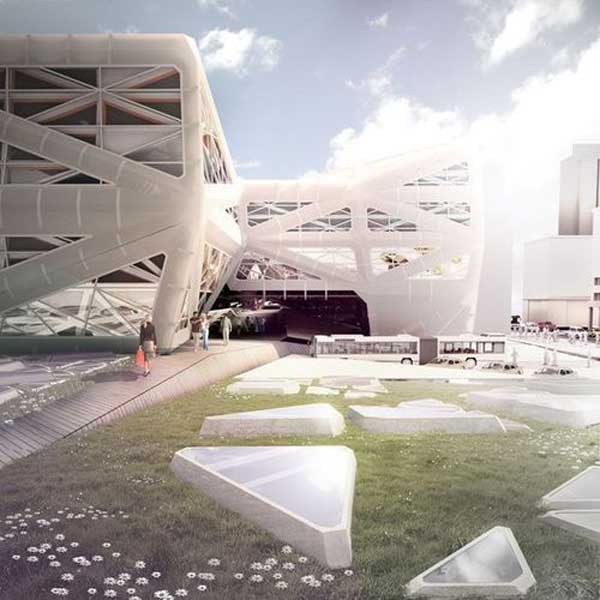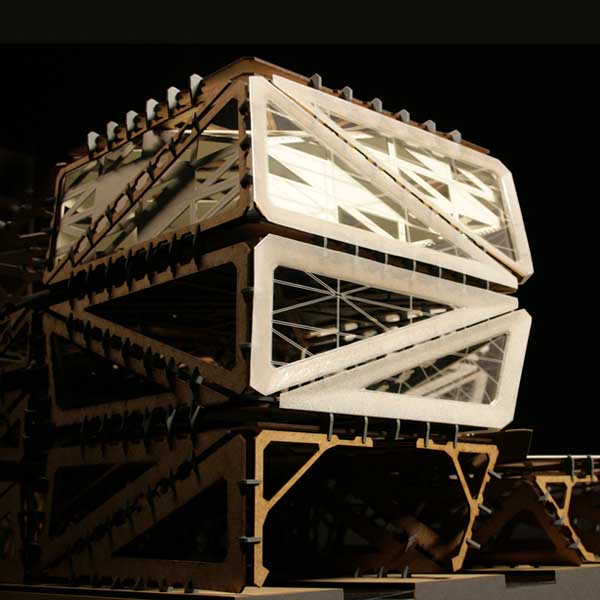The Almere Pampus Transferium by Mariusz Polski is a reflection on an open-ended and meta-stable architecture. Meta-stability is used to describe the extended duration of equilibrium acquired by a complex system when leaving its most stable state after an external action. The parameters of such system usually reach and hold stationary values but after a long time, spontaneously or under a slight external action, they start to change again. The project is an experimental design with the aim to research the hybrid system which would try to offer the solution to the fact that even the most sophisticated buildings cannot be permanently suitable.
Even with the contemporary technological level and multiple scientific insights into natural systems reflecting similar tendencies, the open-ended architecture didn’t receive enough interest. The flexibility of an architectural piece is an issue that has to be revisited due to its great importance. The suitability of any building eventually comes to its end – the building constantly creates an impact on its environment, for which it was initially designed, and an unpredictable, dynamic field of external stimuli triggers changes in the environment. The project, however, doesn’t focus on human factor and the inevitable change of users’ needs over time.
Creating fixed built environment solutions that don’t react to the environmental feedback over the lifespan can be compared with building the house with fixed glazing, with no airflow through. Therefore informational system developed for Almere Pampus Transferium assumes the absence of permanent stasis. Additional computational mechanisms are incorporated, inspired by natural form emergence and evolution, not only in the design process, but also during the life of the building. These systems provide effective and adjustable embodiment, directly linked with the environment, initiating a continuous self-regulating feedback loop.
This experimental design, developed as a final thesis at TU Delft, incorporates contemporary tools as a communication medium with the cultural environment, assuming that the uncertainty has to be planed and valuable part of the process, producing architecture that facilitates environmental feedback and drive its evolution towards internal and external homeostasis.

